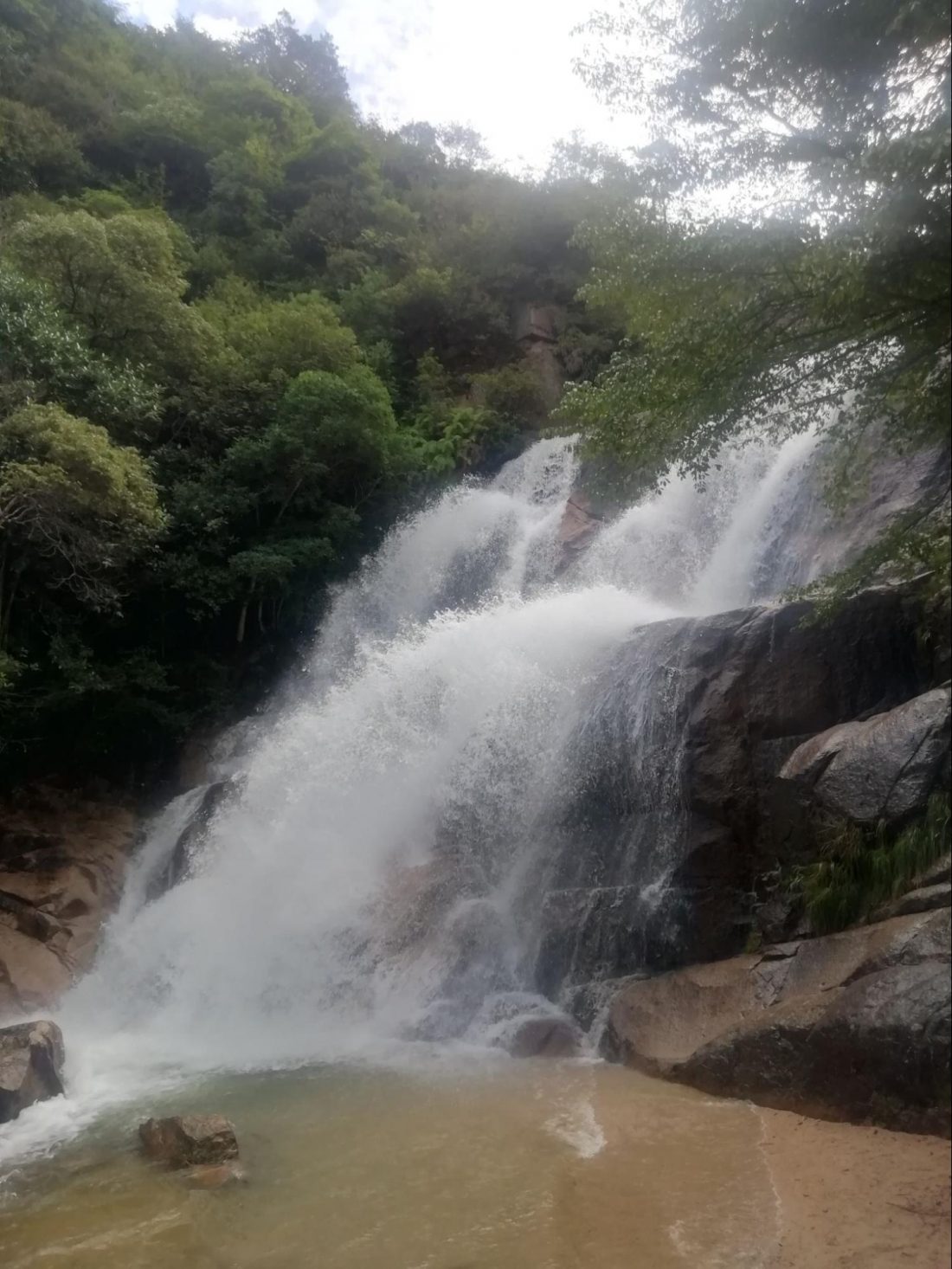100 Stories
IMOSE FALLS – The Married Couple of Waterfalls Which Provide A Unique Hiroshima Thrill
Point of Confession: I love water. Always have. I grew up within 15 minutes of one of the Great Lakes, in America. As a child, we played in and explored the river near my house frequently. I first saw Niagara Falls when I was 10, and first enjoyed a river cruise around the same age or earlier on a ship called the Good Times II, which I still remember after all these years. So it’s no wonder I’ve described some of Hiroshima’s best cruises and water experiences elsewhere. Rivers and waterfalls are especially appealing to me, and I think “Sandankyo Falls” (described elsewhere) might be the most beautiful place in Hiroshima Prefecture, especially in autumn. It’s my natural inclination to seek out water. So imagine my surprise when I just recently discovered, after twenty years of living in this city, that there are waterfalls to be seen and experienced much closer to home, and easier to get to than “Sandankyo”. I couldn’t wait to get there and experience them for myself.
Two waterfalls, often referred to as the “female” falls and the “male” falls (if gender stereotypes bother you, you’ll want to ignore that – the female falls are graceful and quiet, while the male falls are more violently noisy and exciting), can be found just a train stop or two past Miyajimaguchi, behind a rather lovely shrine. Probably not found on any foreign-aimed tourist maps, either, they are not even that well known with locals (as my 20 years of ignorance can attest). However, now that I’ve been there, I can assure you that Imosenotaki is well worth the visit.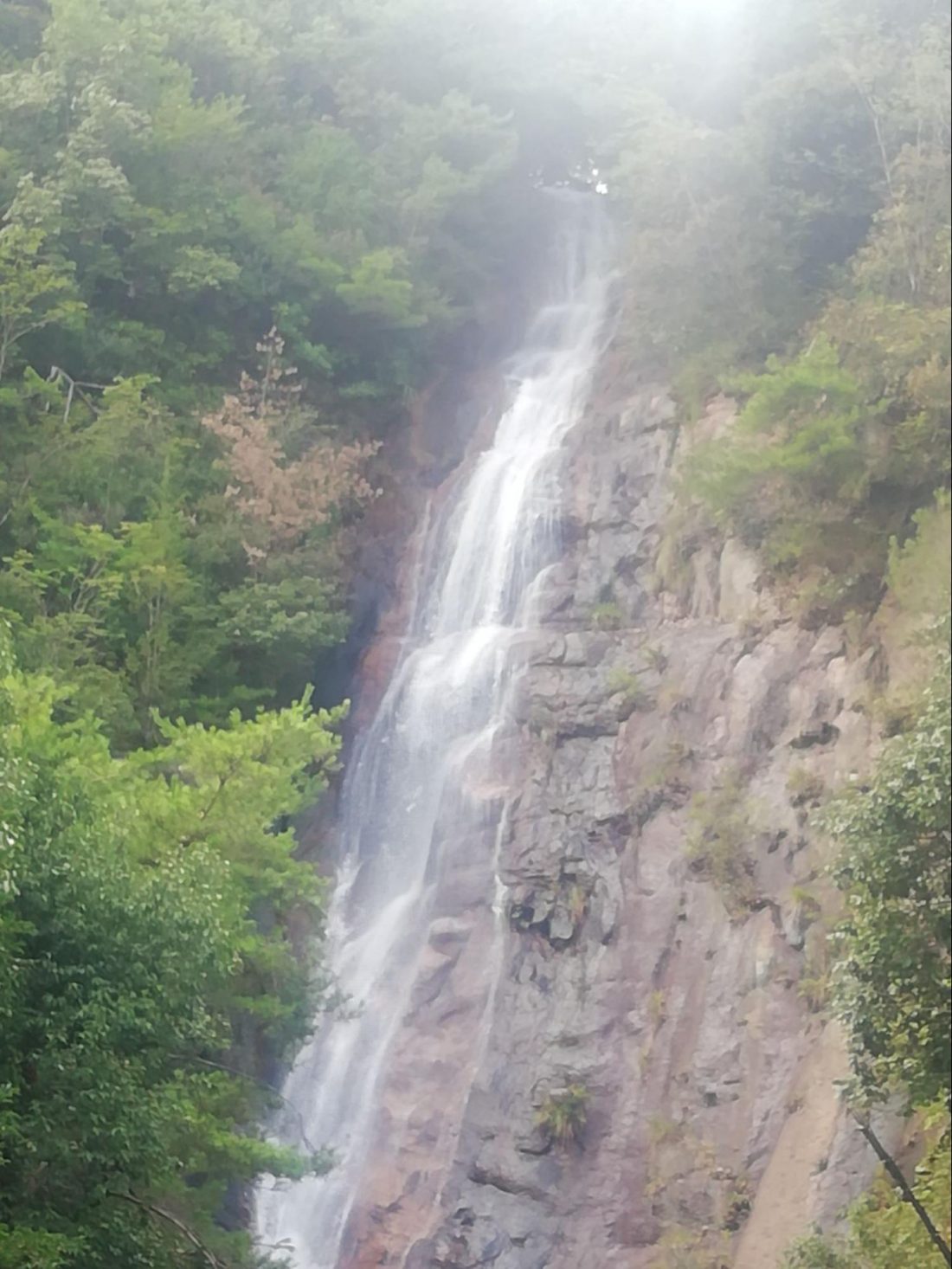
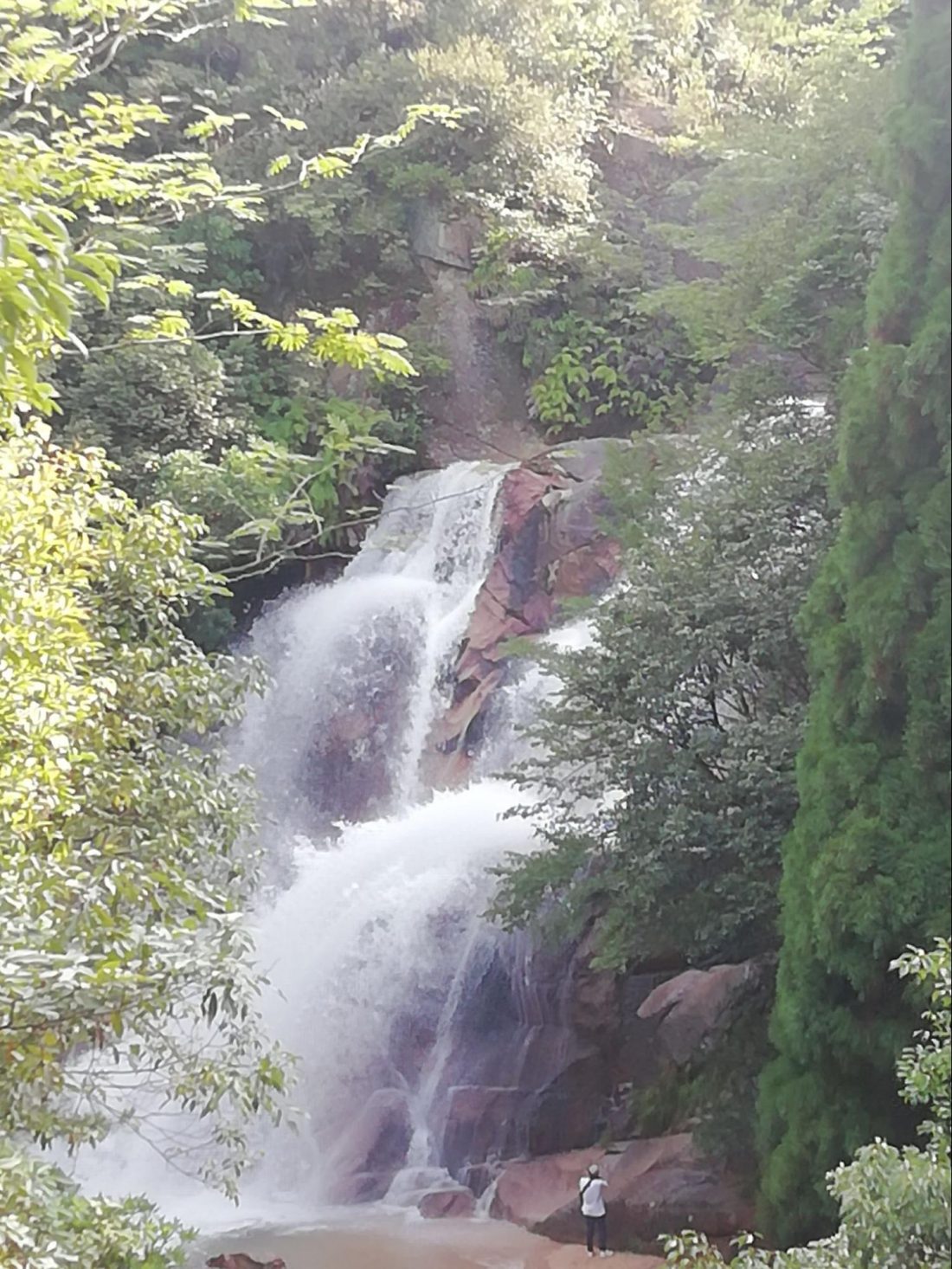 (Insert Video — Falls 1 — here)
(Insert Video — Falls 1 — here)
THE FALLS
Imose Falls is really two distinct waterfalls, as mentioned above. For centuries they have been called the Meo (めお) Falls, with “me” for female and “o” for male. In shrine records, they are found written as 夫婦 (currently read “fuufu” but alternatively read “meo”, and meaning “married couple”) Falls, or the 雌雄 (currently read “shiyu” but also in the past read as “meo”, and meaning “male and female”) Falls. Around the early 1910s the current 妹背 “imose” name became official, but in fact “imose” is still just an older Japanese form of “fuufu” or couple. The “female” fall is officially named Mendaki. “She” is a 50-meter high, slender and elegant waterfall. The “male” is officially called Ondaki. “He” is 30-meters high, but has far more water dropping with more power. Now, again, before you complain of my stereotypes, I would like to remind you that I’m translating from the information on the official web page, as well as signs at the shrine to give you this information, so “slender” and “power” is not coming directly from me any more than male and female is. It’s the history of these falls. That said, you’ll see when you get there, the contrast between the two despite their nearness gives a lot more logic to the wording that just reading about it can supply.
Both falls have shallow basins which make wading and swimming quite popular. The Mendaki Falls have no direct access, though there is a lovely swimming spot with an excellent view of the falls. The Ondaki Falls, however, the best swimming area is less than 20 meters from the falls, and, in fact, you can get right up under the falls if you wish. I don’t know if you have ever seen pictures or video of Shinto priests in Japan mostly naked praying under a waterfall streaming down on them, but you can do that yourself here if you like (please use discretion on what you wear, however, since there will be many other viewers there with cameras).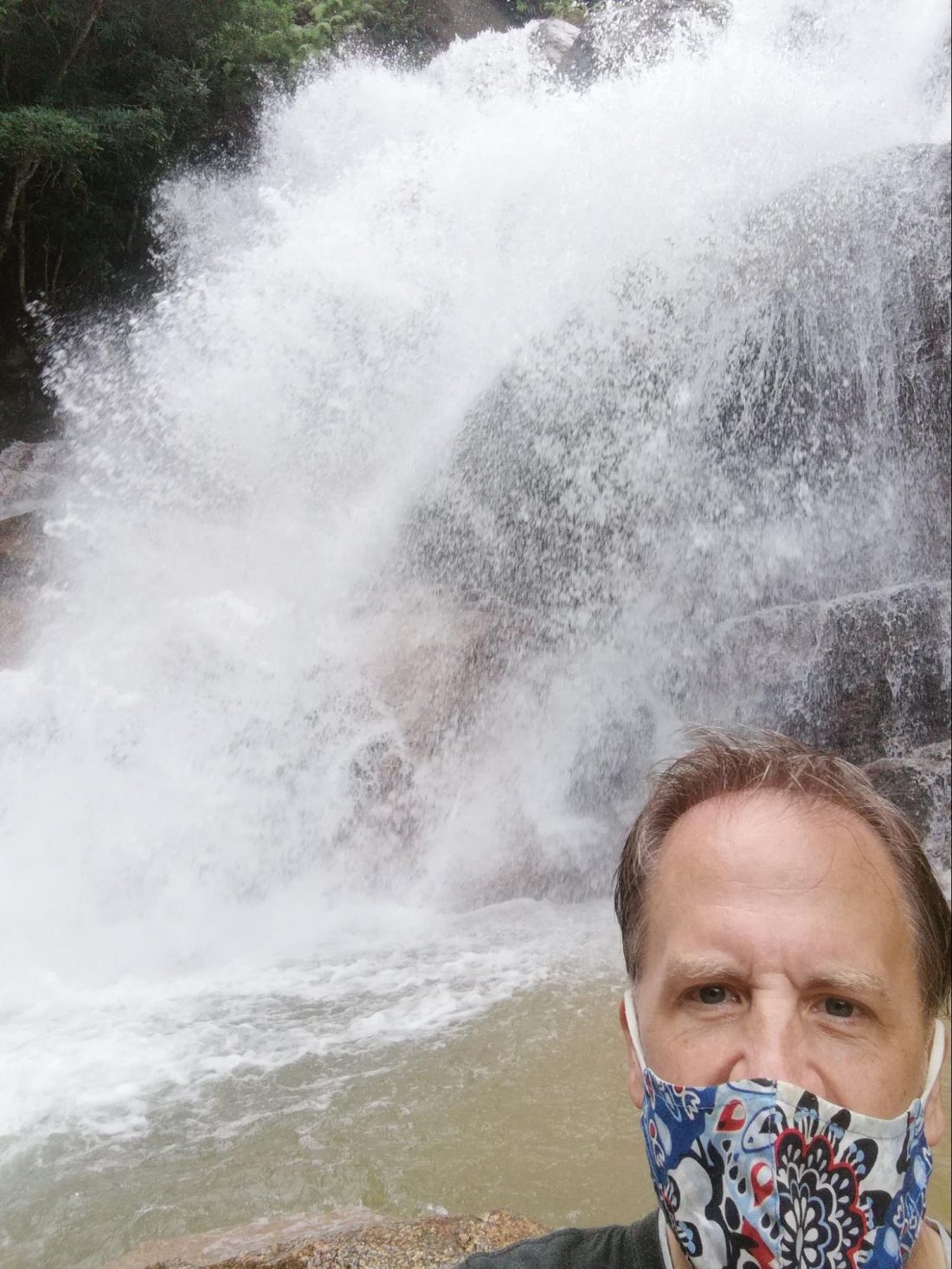
MY EXPERIENCE WITH EACH FALL
The falls are just behind Ogashira Shrine, which I’ll talk about more below. I was actually a little misled by the combination of a loosely-worded website and my Google map. The site I saw referenced a “short hike”, and my Google map showed “Imose Falls Park” as well up the hill behind the shrine. So when I first arrived at the shrine, I thought that was going to be something I’d check out quickly before moving on to the falls. However, I was pleasantly surprised to discover that Mendaki can actually be seen from the shrine itself. Completely unexpectedly I looked to my right and there “she” was.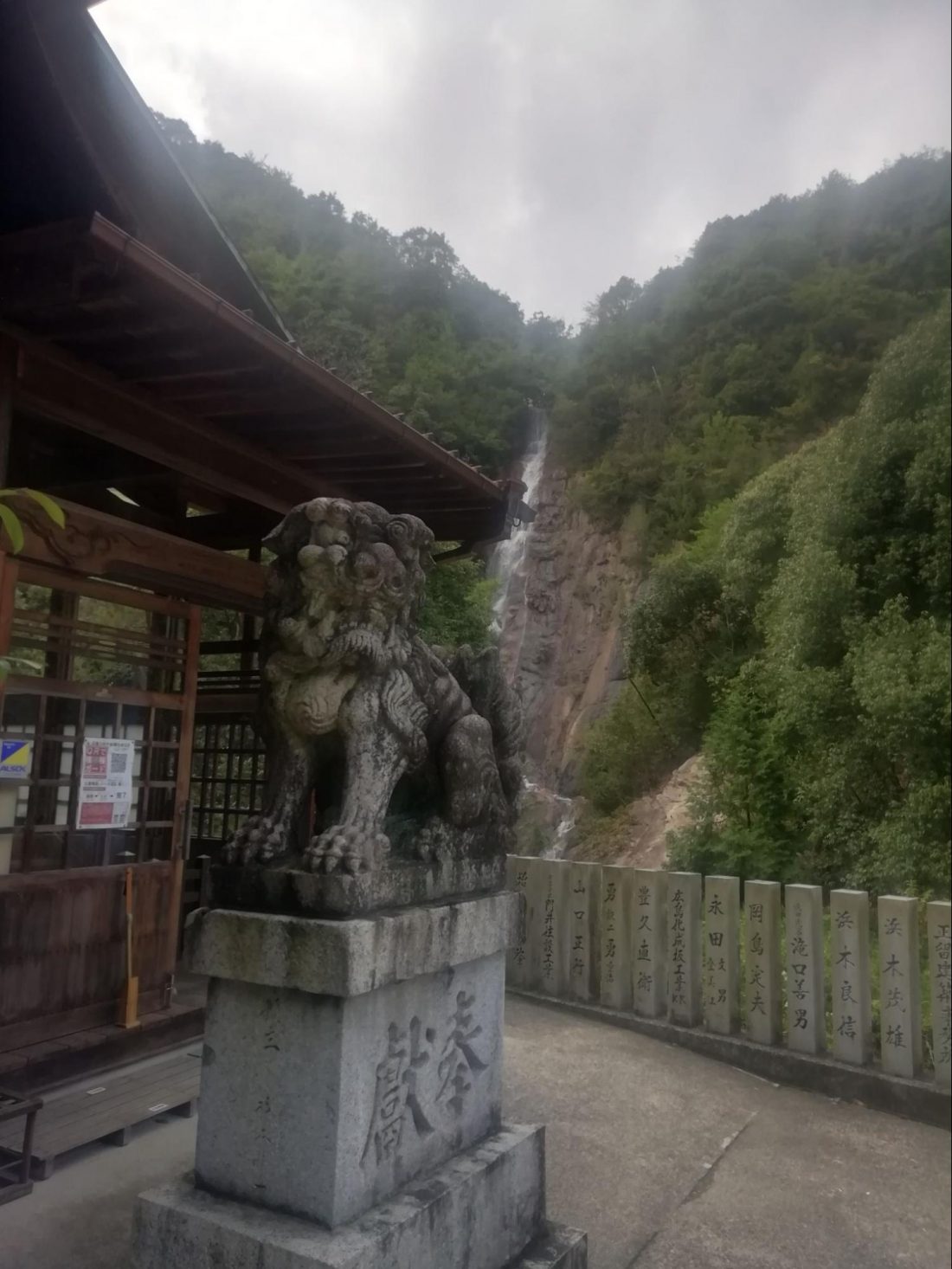
Fifty-meters (165 feet) is a bit hard to picture well, perhaps, but “she” really is fairly high up. In fact, according to the Internet, Niagara Falls themselves are about 50 meters. Of course, Mendaki has perhaps 1/10,000 or less of the water flow. Probably much less. She is, as described, tall, slender and elegant. You can’t quite see where her water lands, and you can’t really hear her water either. You’ll hear rushing water at this point, but the sounds are from some mini-rapids in the river by your feet or her husband falls just upstream. Mendaki herself is more the kind of elegant view that makes you take a camera, snap some lovely pictures, and then want to just sit and enjoy nature for a while.
There are not the best spots for doing just that, however. Primarily because that best view is coming from the Shrine grounds themselves, there aren’t a great many sitting options. There is, however, a river just next to the shrine, with a shallow basin that would be a great place to wade and enjoy the view. When I was there, there were several children and a dog having a great time in the water, however, which made me happy for them, but didn’t sit with the feeling of contemplation that Mendaki Falls created in me. So I moved on to go find her husband.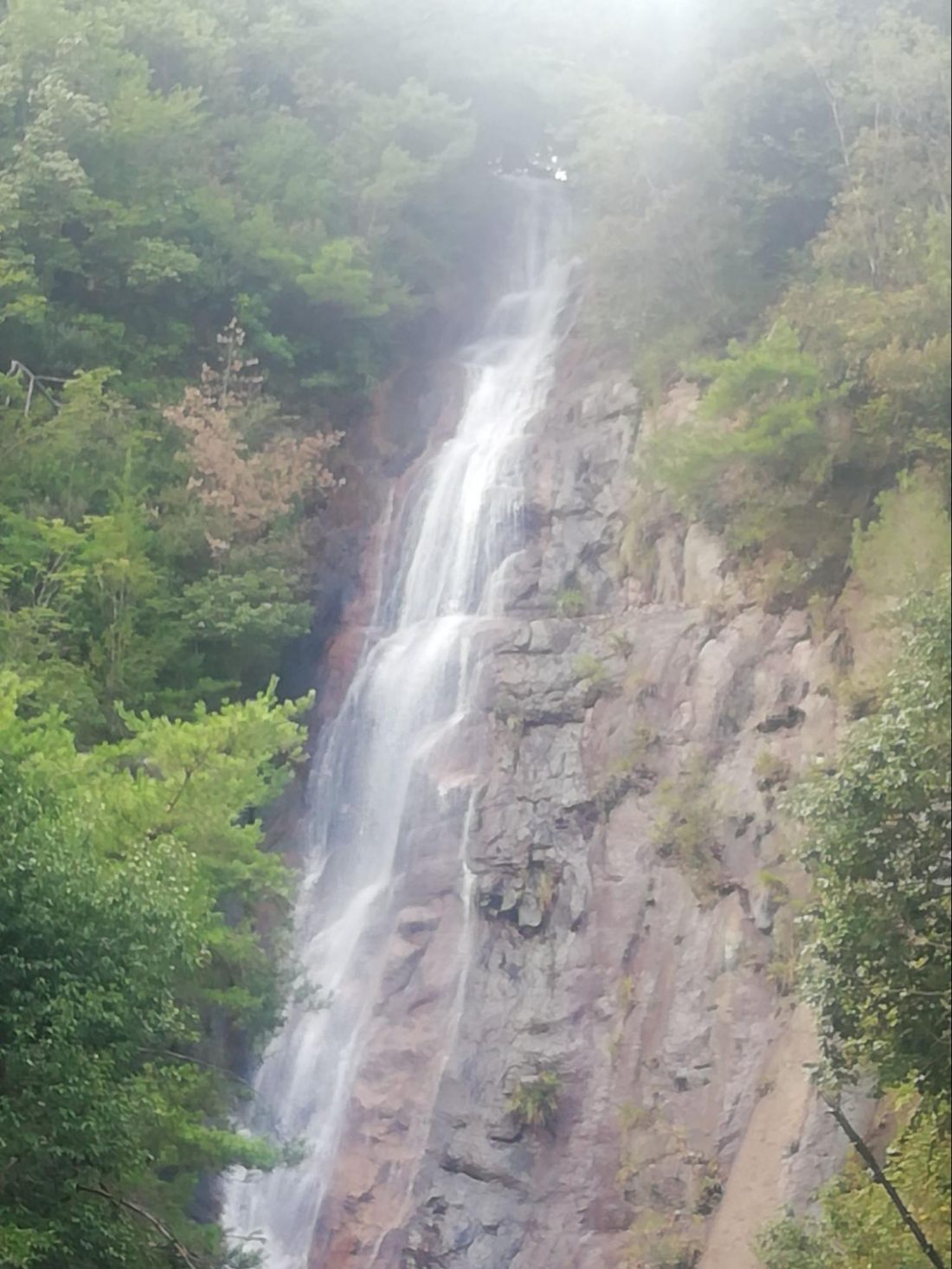
“He” had also been described as a “short hike” upstream. In my own linguistic mind, a short hike is a minimum five minutes, but more like 10 or so. In fact, within about one minute you’ll both see and hear him as you round a corner. There is a red bridge crossing the river that will bring you up close to him, which you definitely want to do. But just before the bridge there is a path and sign that says Ondaki Observation Deck. Personally, I thought this trail would take me much higher up and work its way near the top of Ondaki. However, it only goes up a short way until there is a perfect line-of-sight view of the falls. They did, quite coolly, literally build an observation deck, so it is worth it to climb the trail and then climb the stairs up to the deck, even if just for a few minutes and a picture or two. You can actually see Ondaki, the shrine, and even a glimpse of Mendaki from the deck.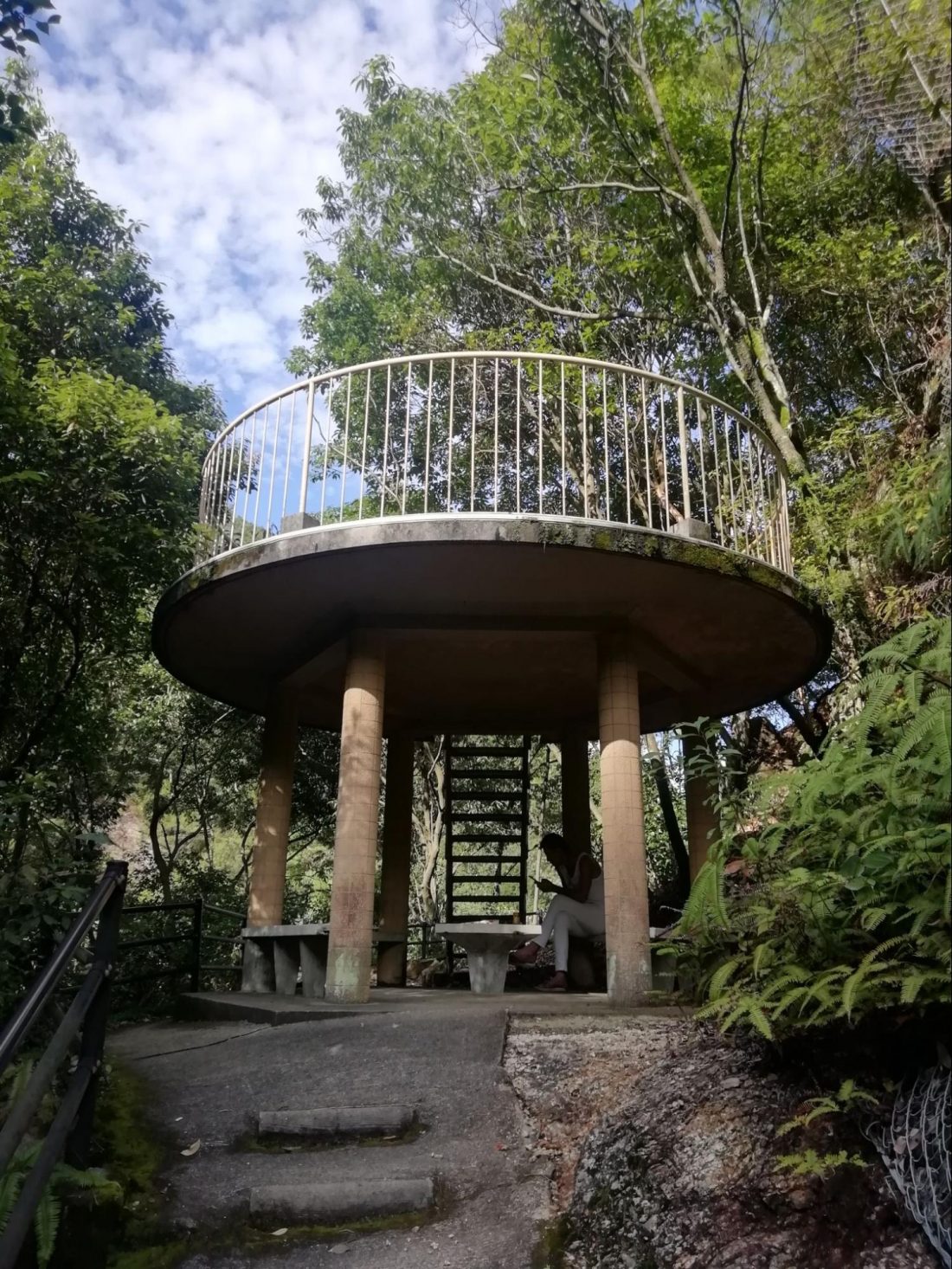
The main thrill of Ondaki, however, is how close you can get to his “power”. The bridge takes you to an open area along the river with many large rocks that are perfect for sitting and even picnicking on. I highly recommend bringing something to eat. I did, and my simple sandwich tasted so much better because of the location. These rocks are also next to the shallow point of the river, with a stepping stone entry. So it is at this point that many people were entering the river, especially those with small children. Many of them had floats to sit on even (note of caution, though extremely weak and slow moving current – surprising based on the thunder of Ondaki feeding it – the river does flow over a small dam-like mini falls just downstream, so don’t let small children float or play unattended).
Keep walking, past the rocks, however, and you find yourself at the edge of the river within perhaps 10 meters (15 feet) of the bottom of Ondaki. He will be bouncing off the rocks just above you. He’s noisy and exciting, and it’s quite thrilling to get that close. You’ll even feel a little spray. I got some amazing pictures at this point. Close-ups of spray to selfies with the spray seemingly just over my head. It was amazing. But I wanted more.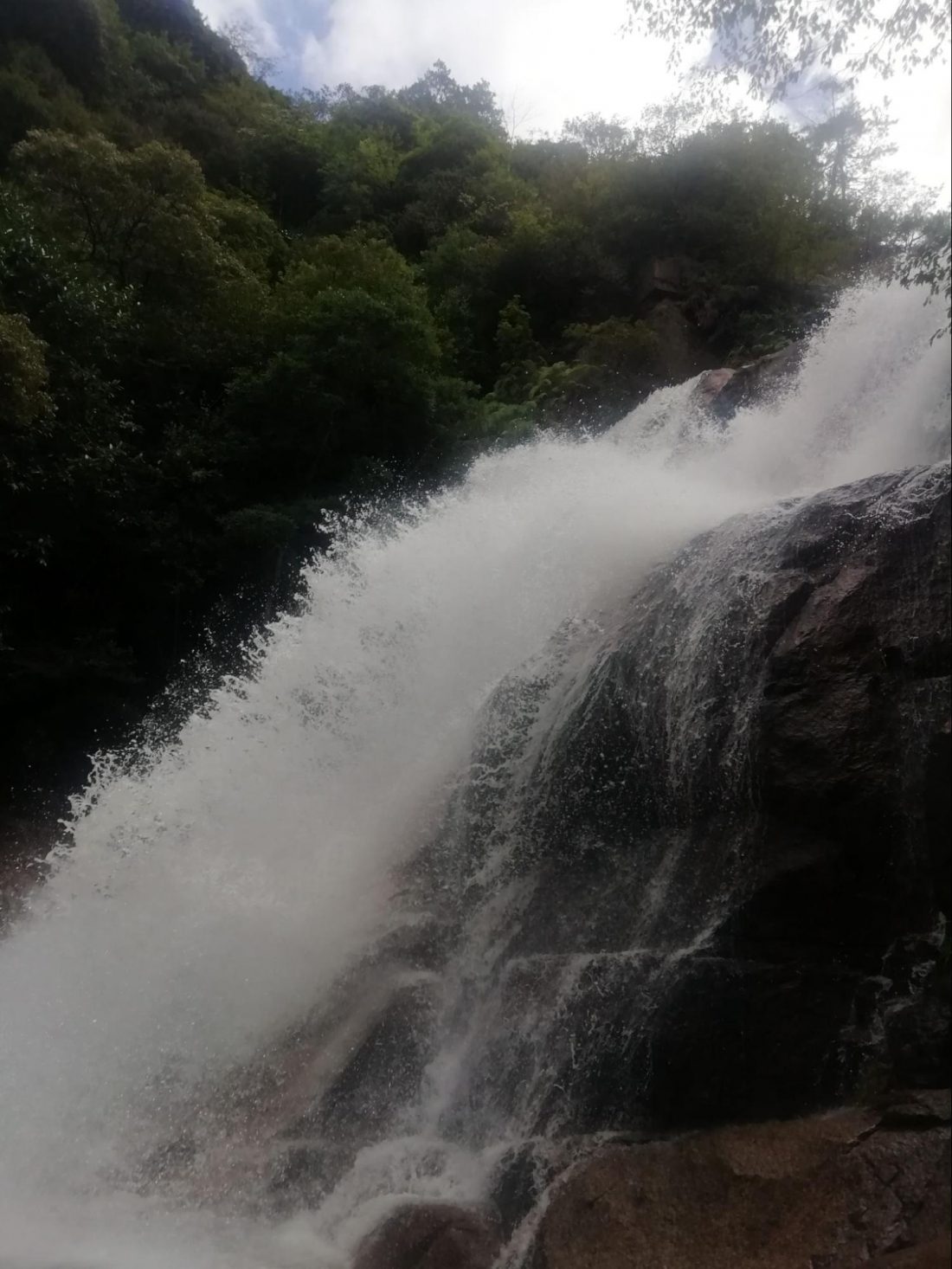
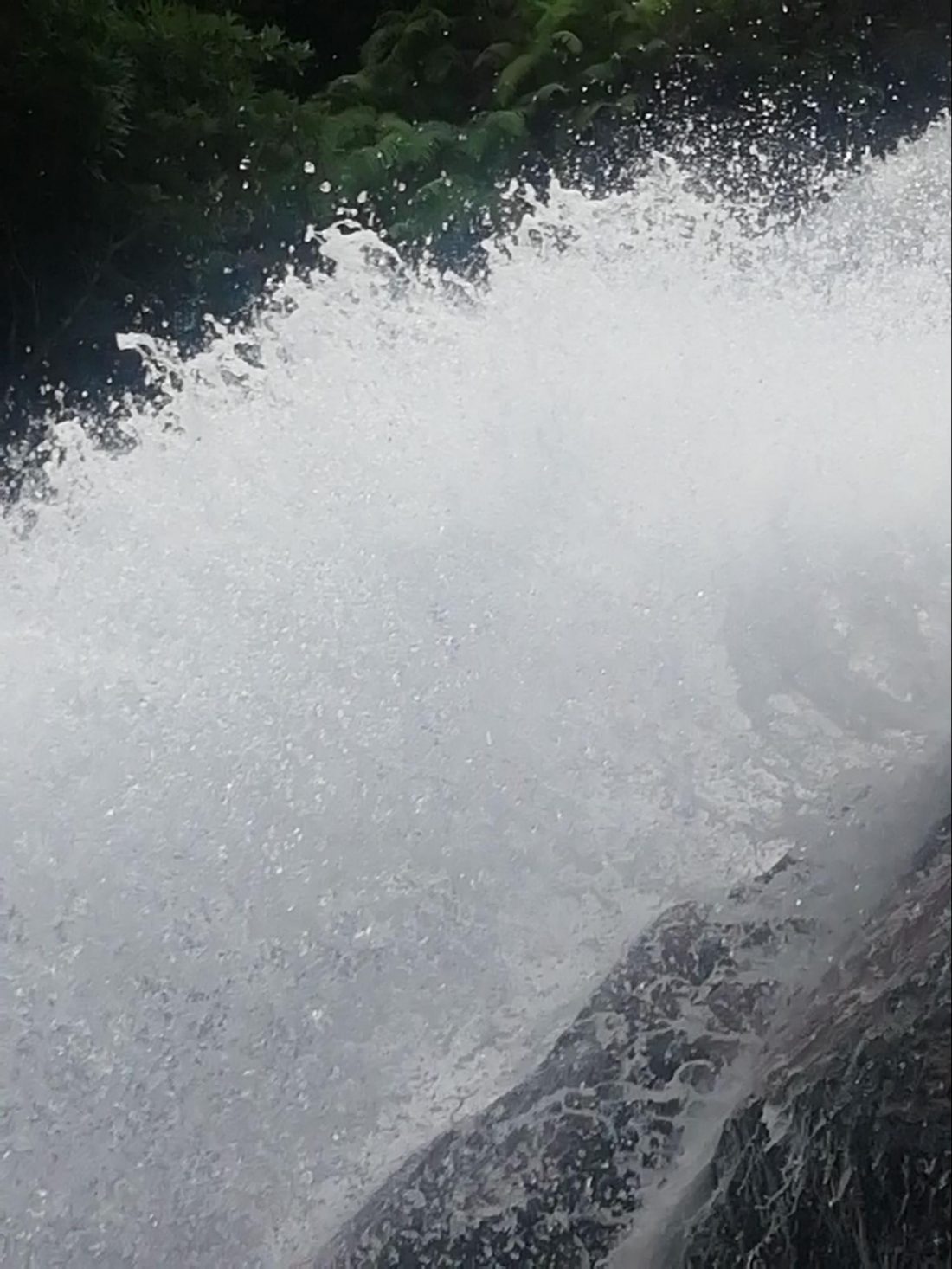

Off came my socks and shoes and I waded out as close as I dared since my phone is not waterproof. These photos were making me feel like a professional photographer despite being hastily snapped on a smartphone. If you have a waterproof phone or camera, you could literally take photos from under the spray. I didn’t have that option, but just getting close I could already feel my shorts and shirt getting wet from the splashes, so I just had to do it.
(Insert Video — Falls 2 — Here)
MOMENT OF JOY
Yep, I waded back to secure my phone, took off my watch, checked for anything else that needed to be protected, and then waded back. And this time I didn’t stop just before. With Ondaki shouted out to me in his loudest voice, I walked straight under, and then turned and just stood there with my arms out feeling the cold, cold falls come right down on me. I really wish I had asked someone to record the moment on my phone for me, but as it is, that image will be in my heart for a long time. I settled for a post-immersion selfie for proof. Moment of Joy, indeed! It was fantastic!
A quick note. I was there in mid-summer. The water was cold, but no more so than a shower in my own home and far, far more invigorating. If you believe in it, the website assures that the water repelled by the rocks is full of negative ions. I have already decided, however, that I will be returning to these falls, now that I know of them, in the autumn. The amount of foliage surrounding these two falls is vast, so the colors in November have to incredibly gorgeous. I can’t wait. I’ll also be tempted to return in February and try the waterfall plunge under far more cold, yet hopefully more invigorating temperatures. This truly is a year-round worthy location.

